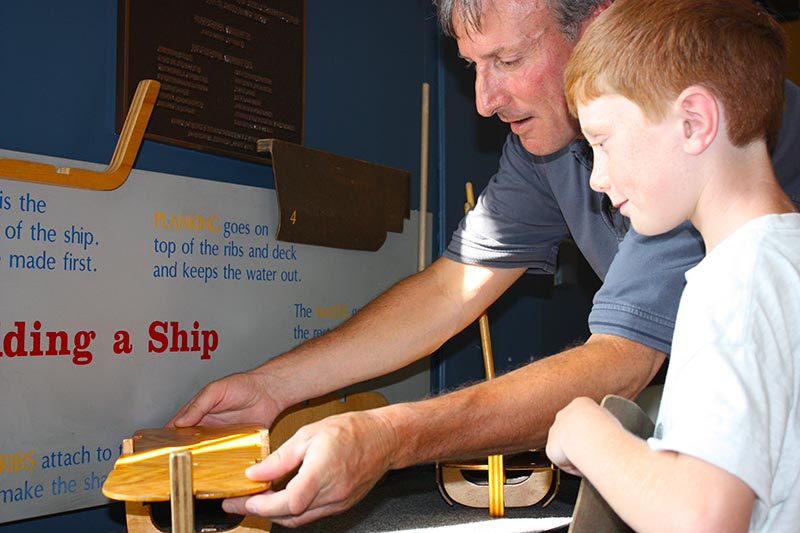I would like to be able to say after working in the area of family learning for most of my 30-year career that I can tell you how to spot family learning when I see it from across the room but it is not always so easy to recognize. However, there are some clues. A good place to start is to identify the characteristics of family learning.
Characteristics of Family Learning
A useful staff training guide from The Children’s Museum (TCM) of Indianapolis, entitled Family Learning at The Children’s Museum, written with my assistance when I was at the Institute for Learning Innovation and working on TCM’s Family Learning Initiative, identifies the following characteristics:
- Family learning is playful, fun, and a social experience
- Family learning is influenced by the ages of the children and adults in the group
- Families all learn in different ways
- Families find value in their own personal observations and experiences by working, talking, and solving problems together
Conversation as a Characteristic
Conversation also is a key characteristic of family learning. As Minda Borun of the Franklin Institute Science Museum stated in her talk at this project’s Family Learning Project Roundtable in June 2005, conversation is the “currency of family learning.”
Behavior and Interaction
Families interact in predictable ways, influenced by the age of the children, familiarity with the setting, and their family learning style. Behaviors include a wide range of verbal and nonverbal interactions: looking at exhibitions, participating in programs, visiting the gift shop, engaging in conversation, gesturing, modeling, and emoting. These behaviors are carried out collaboratively within the museum, but also extend beyond the museum.

Phases of a Typical Family Museum Visit
Most family visits to museums last about 1-2 hours and have four distinct phases:
- Orientation (3-10 minutes)
- Intense exhibition viewing (25-30 minutes)
- Exhibition cruising (30-40 minutes)
- Leave taking (5-10 minutes)

1. Orientation (3-10 minutes)
During orientation, families arrive, orient themselves to the space, buy tickets, find/use bathrooms and this phase is longer for those visitors less familiar with the setting. Much of the family’s time is spent figuring out what to do and where to go, by watching others, asking for assistance or finding maps and kiosks.
2. Intense Exhibition Viewing (25-30 minutes)
Families begin their visit, initially in an intense exhibition viewing mode. In fact, those familiar with the setting may go to only one exhibition or program but spend focused time there. Those less familiar with the institution may feel the need to “do the whole museum” and it is important to help these visitors feel comfortable not seeing everything or making informed choices about what they might enjoy doing and seeing. This is the phase of the visit in which families are most focused—trying to do the “right” thing, read labels together, manipulate interactives, show one another things and converse. My work also demonstrated that it is during this intense phase, when families engage in a range of learning behaviors along a continuum of guided to independent learning (Dierking, 1989). Some families move together through the museum, interacting and conversing, while some families, even those with small children, break off into smaller groups and interact more independently.
3. Exhibition Cruising (30-40 minutes)
About 30-40 minutes into most family visits, members begin to tire, get cranky, hungry, etc. At this stage referred to as exhibition cruising, families begin to move more rapidly through the exhibitions, being far more selective in terms of what they stop to view and do. More non-related social interaction is also observed in this phase.
4. Leave Taking (5-10 minutes)
During leave taking, the family ends the visit and makes way for the door. If it is chilly they gather their coats and generally head to the restrooms once more time. They may also stop at the gift shop or food service, and sometimes this refreshes them enough to continue their visit which is usually a truncated version of what was just described. However, most families leave the museum at this point.
